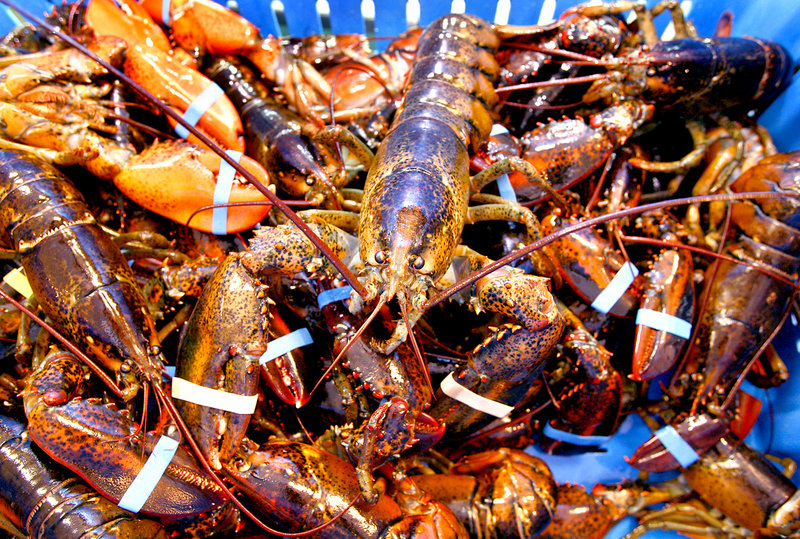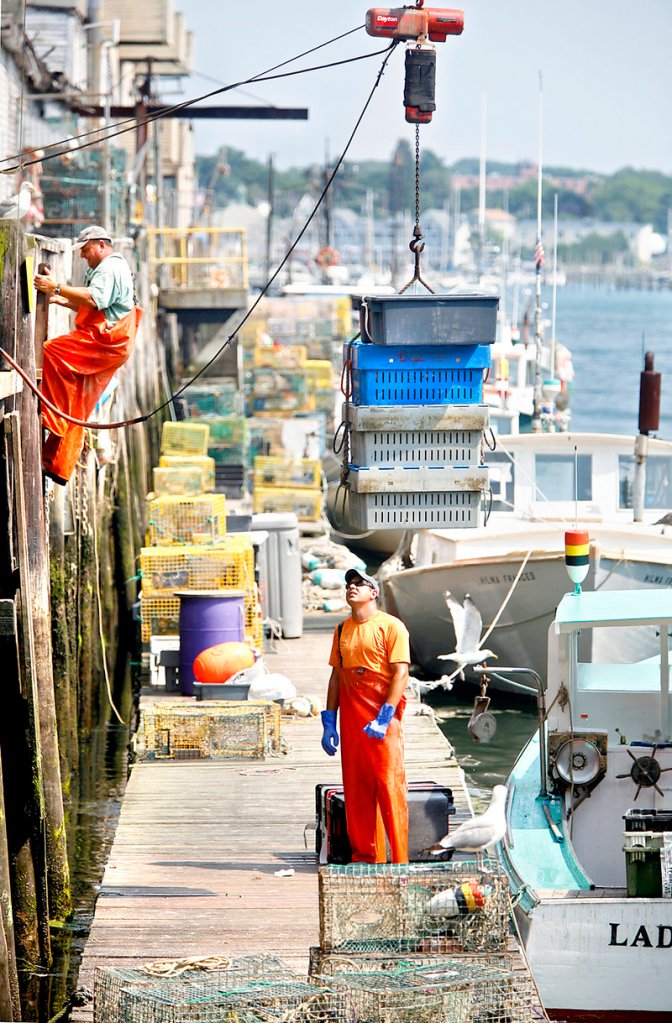Lobstermen who tied up their boats for a few days, hoping to drive up prices for their catch, apparently went back to sea Tuesday, without signs of much change in prices.
“You’ve got to tend your traps,” said Brian McLain, a lobsterman from New Harbor who is on the Maine Lobstermen’s Association board.
Lobstermen said the tie-up wasn’t a concerted effort, because that would violate federal anti-trust laws. So there’s no way to tell how many sat out for a few days.
Arnold Gamage, a lobsterman in South Bristol, said he kept fishing, as did most others in his area, despite prices of about $2 per pound — near record lows — from lobster dealers.
Gamage said he has had to throw fewer lobsters overboard this year than in the past, because not as many are smaller than legal size, over the legal size or females bearing eggs.
“I’m not even seeing as many soft ones this year as we do in other years,” Gamage said. “I never imagined that the problem we would have is too many good lobsters.”
The biggest problem for most lobstermen seems to be a glut of soft-shells — lobsters that have recently shed hard shells and started growing into larger, softer ones.
After they shed, lobsters hide from predators until their new shells harden some, then emerge hungry and head for baited traps.
Prime time for soft-shell lobsters typically comes in July. But this year, many lobsters had shed, hidden and emerged by early June.
“You’re dealing with an unprecedented situation that hasn’t happened in the history of commercial lobstering,” said Matt McAleney, a dealer with New Meadows Lobster.
McAleney said prices are low, but “it’s never a good price from the fisherman’s standpoint.”
Retail prices are about $4 a pound and up, he said, though prices are often volatile in the summer.
An unusual combination of factors is making this a good year for catching lobsters and not a particularly good one for selling them, said Robert Bayer, executive director of the University of Maine’s Lobster Institute.
He said Canadian lobstermen fared well during their peak seasons, which are typically fall and winter, producing an abundance of lobsters for Canadian processors.
The processors didn’t need as many lobsters from American fishermen to fill orders, Bayer said, and many of the processors shut down for much of the early summer.
Meanwhile, lobsters in the U.S. started shedding early, and more seemed to shed at the same time, Bayer said.
“I don’t know what this means for later in the year,” he said, but for now it means plenty of hungry lobsters crawling into Maine lobstermen’s traps.
Soft-shell lobsters are rarely shipped out of the local market because they can’t survive long trips well. As lobsters’ shells harden, they can be shipped farther and farther, meaning the market for Maine lobsters will grow earlier than normal this year because their shells are hardening earlier.
For lobstermen, that bright spot still appears well off in the distance.
“We’ve put a lot of lobsters on the market,” Gamage said, but “it’s hard to make the business work at these prices.”
Staff Writer Edward D. Murphy can be contacted at 791-6465 or at: emurphy@pressherald.com
Copy the Story Link
Send questions/comments to the editors.





Success. Please wait for the page to reload. If the page does not reload within 5 seconds, please refresh the page.
Enter your email and password to access comments.
Hi, to comment on stories you must . This profile is in addition to your subscription and website login.
Already have a commenting profile? .
Invalid username/password.
Please check your email to confirm and complete your registration.
Only subscribers are eligible to post comments. Please subscribe or login first for digital access. Here’s why.
Use the form below to reset your password. When you've submitted your account email, we will send an email with a reset code.